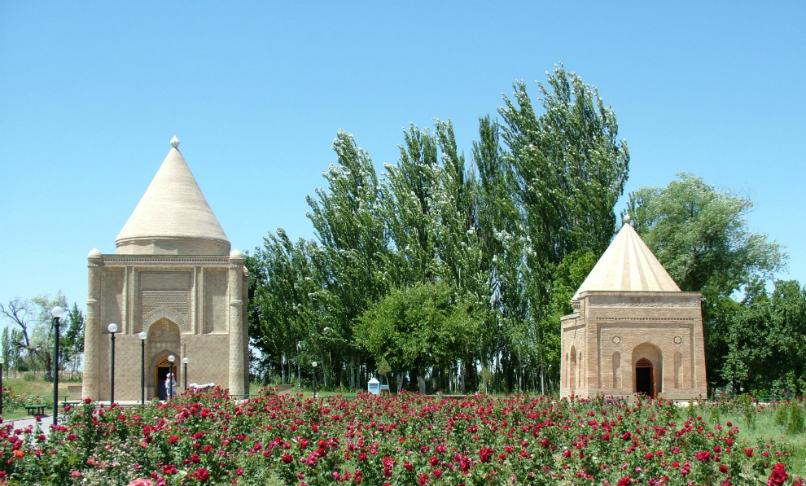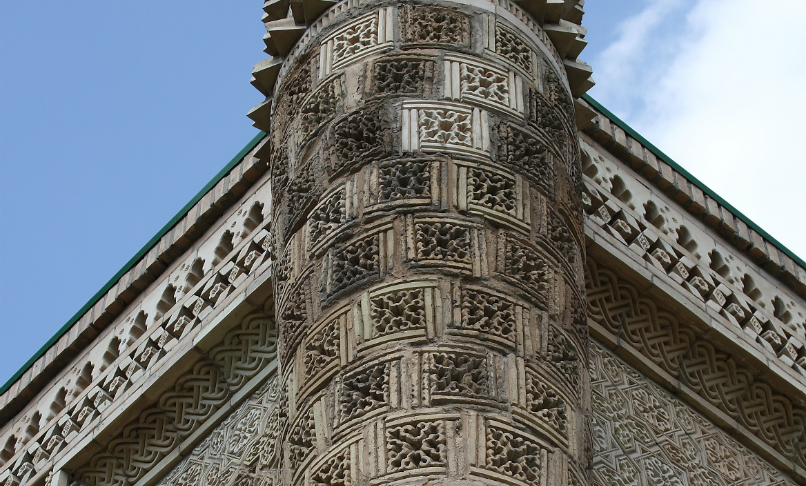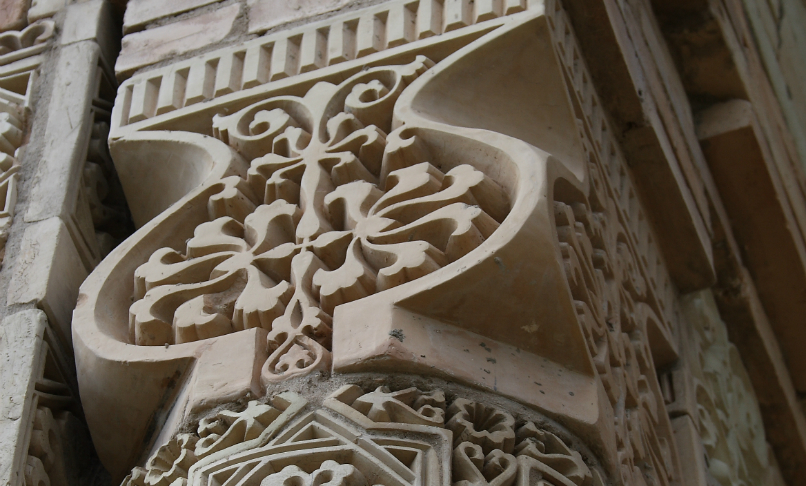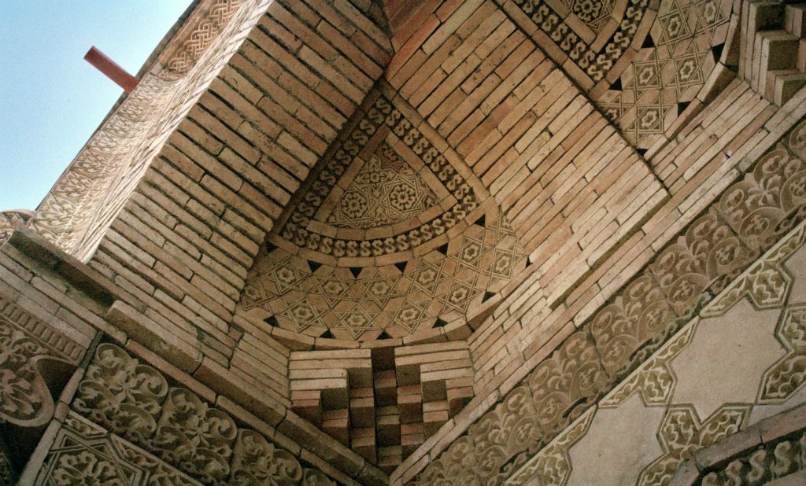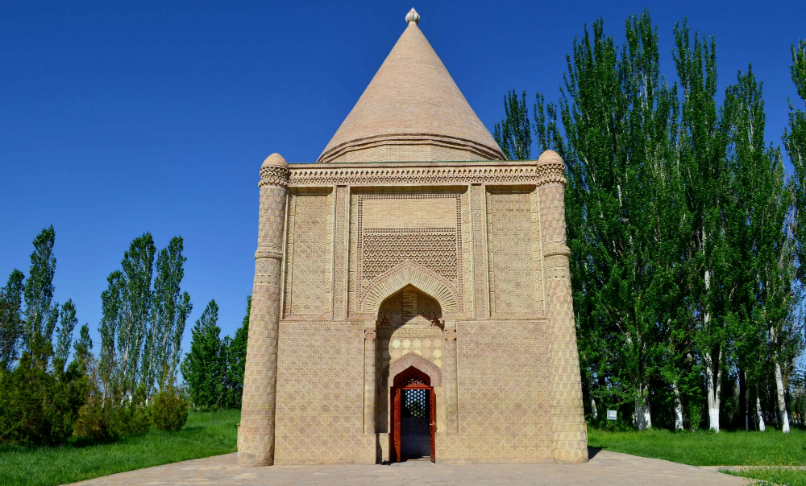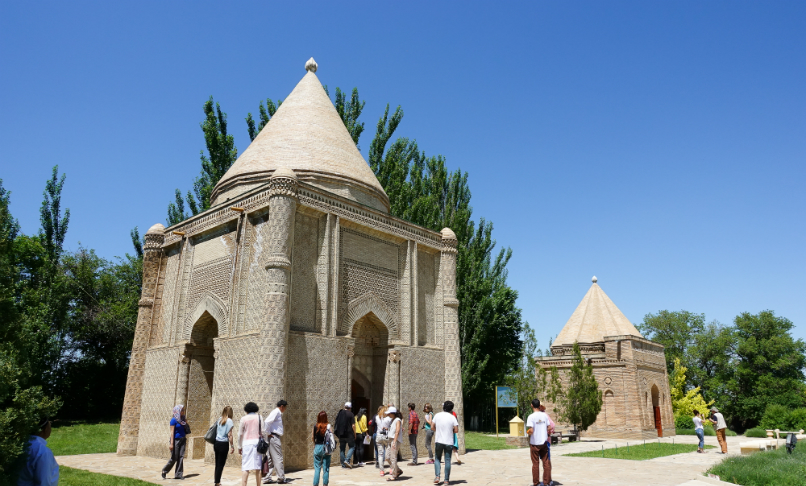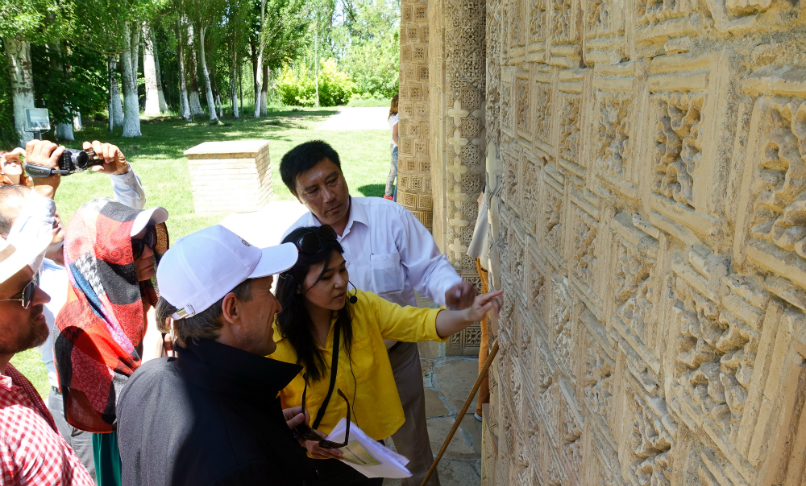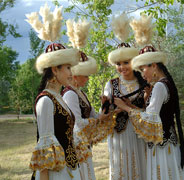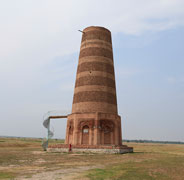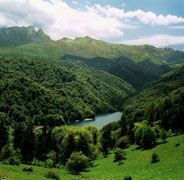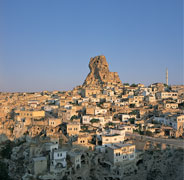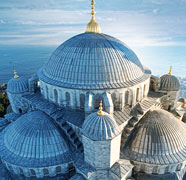Aisha Bibi Mausoleum
The Aisha Bibi Mausoleum, situated in the village of the same name in the Zhambyl region, 18 kilometres from the town of Taraz, was built in the 11th or 12th century and is one of Kazakhstan’s most architecturally important monuments.
According to legend, the mausoleum was built by Karakhan, a ruler from the Karakhanid Dynasty for his beautiful fiancée Aisha-Bibi, daughter of Sufi poet Khakim-Ata, known as Zengy Baba, follower of Ahmed Yasawi.
Karakhan and Aisha fell in love with each other when she was just 16. Her father refused to give his permission for them to marry and Aisha left home.
“You will cross six rivers, but will not cross the seventh one,” her father called after her as she left. Aisha then crossed six rivers but stopped at the seventh river, remembering the words of her father.
At that moment, a snake crawled out from under a stone, bit Aisha and killed her. Karakhan arrived to see his lover lying dead on the ground. Heartbroken, he ordered his architects to build a mausoleum on the same spot so that her name would be remembered for ever.
On his orders, only the best construction materials were used and the best architects engaged.

